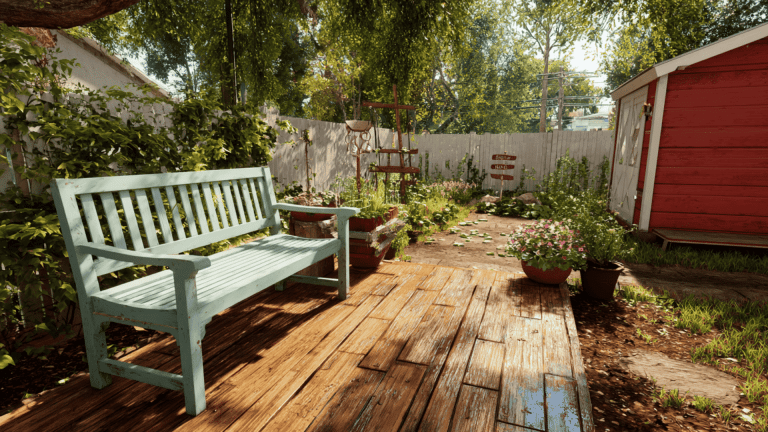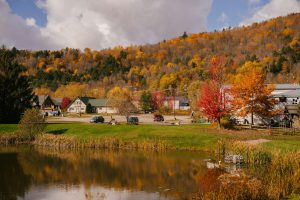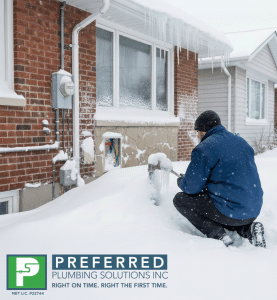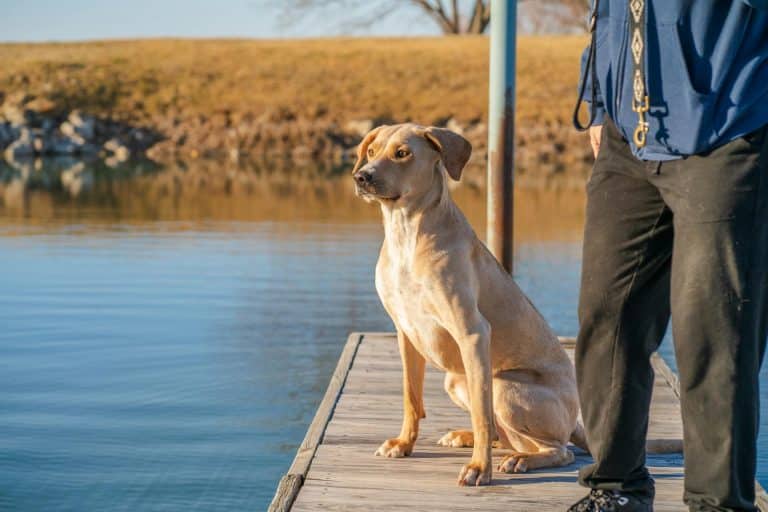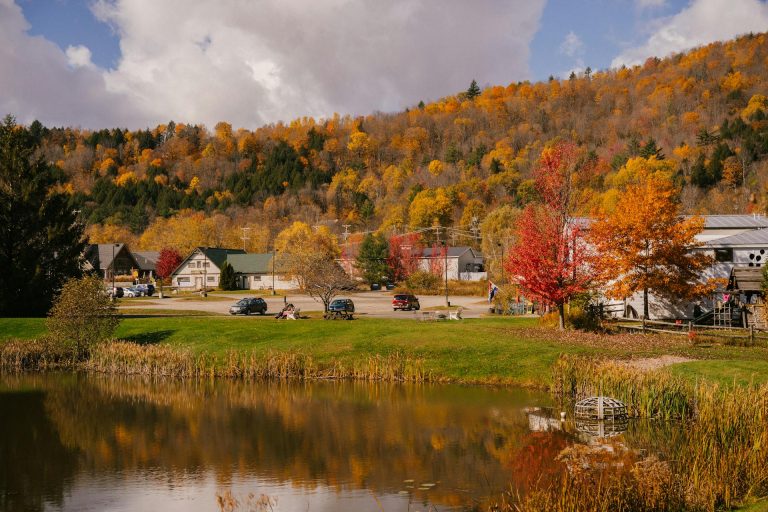Peeling paint, faded boards, or rot creeping in? Outdoor wood takes a hit from weather, water, and wear. The wrong paint only speeds up the damage.
Let’s cut through the noise. You’ll get clear advice on what to use, what to skip, and which paints actually hold up over time.
Whether you’re painting a fence, deck, or garden bench, I’ll help you pick the best exterior house paint so you’re not back out there repainting next season.
Let’s dig in and find the best paint for outdoor wood that gets the job done and stays done.
Why Choosing the Right Paint Matters
Outdoor wood takes a beating year-round. Between the sun, rain, humidity, and shifting temperatures, it’s no surprise that paint can start to peel, crack, or fade if you don’t pick the right kind. Over time, that wear can even lead to wood rot.
That’s why it pays to choose paint made specifically for exterior wood. The right product helps protect against moisture, UV rays, and weather damage.
It holds color better, keeps the finish intact, and cuts down on how often you’ll need to repaint or make repairs.
In short, picking the right paint up front saves you time, money, and headaches and keeps your outdoor wood looking sharp.
Best Paints for Outdoor Wood (Product Roundup)
There’s no shortage of paint on the shelves, but when it comes to outdoor wood, most of it just doesn’t hold up. Sun, rain, and changing temps will chew through the wrong kind of paint in no time.
That’s why I’ve pulled together this no-fluff list of top performers, the ones that stand up to real weather, real wear, and real use.
If you’re painting a deck, fence, or backyard bench, this will point you straight to the best paint for the job.
1. Behr Marquee Exterior
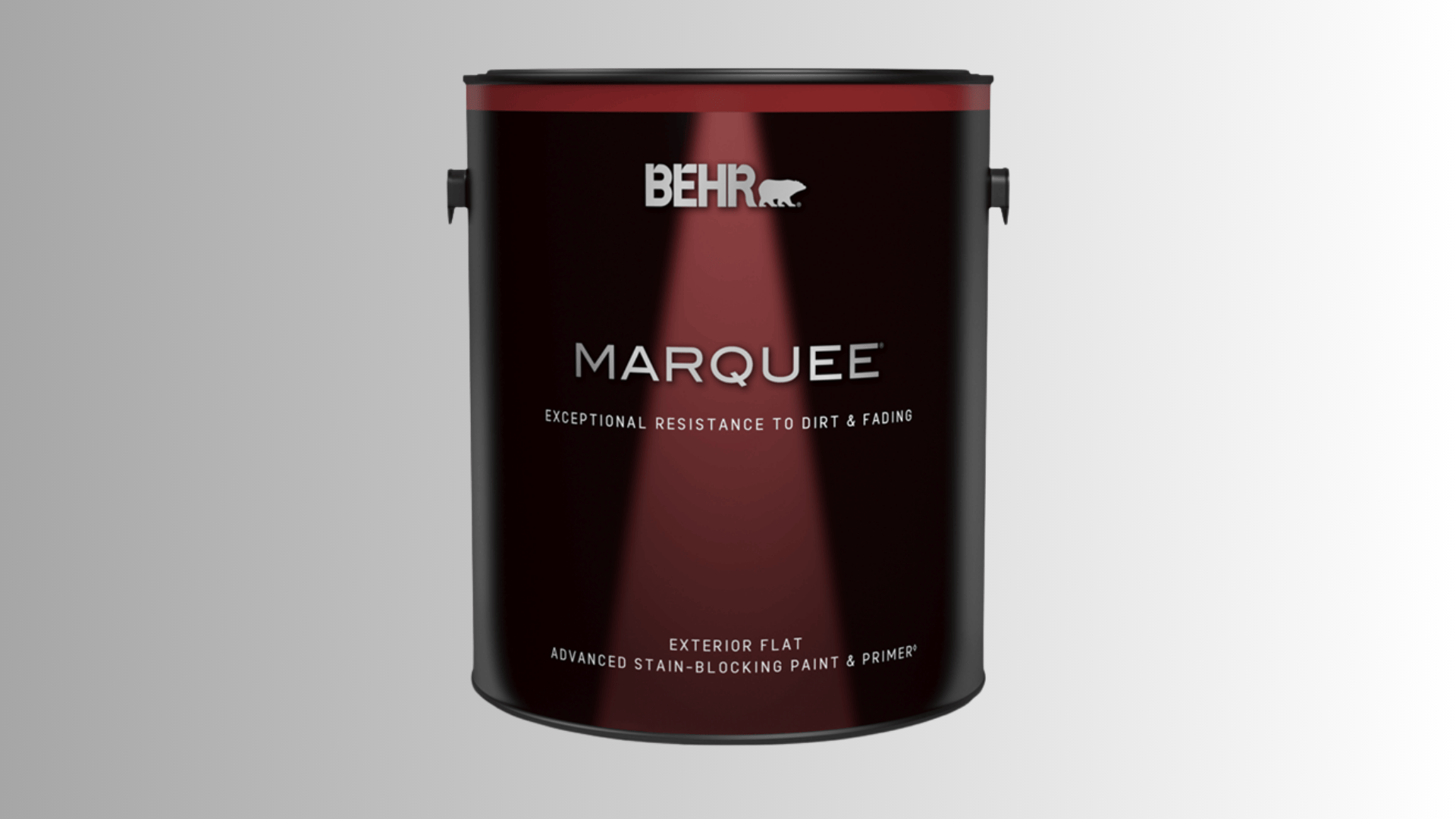
A dependable, versatile choice for siding, fencing, and trim. It performs well in most climates, resists mildew, and gives solid coverage with fewer coats. The low-VOC formula also makes it a safer, garden-friendly option for areas near plants and soil.
- Price Range: $45–$60
- Key Features: Excellent coverage, mildew resistant, holds up in all climates
2. Benjamin Moore Aura Exterior Paint
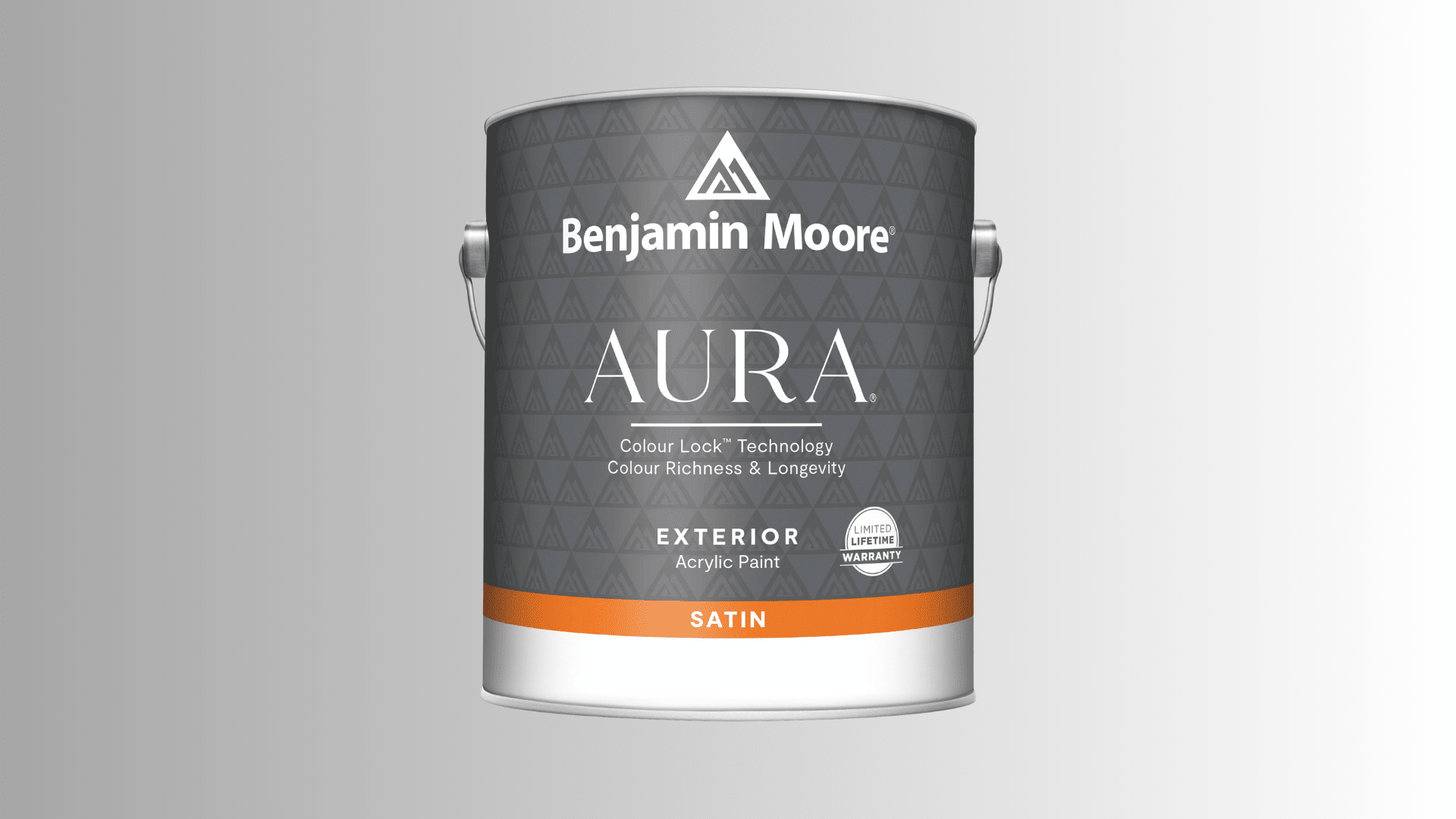
One of the toughest paints out there, especially under direct sunlight. Great for high-exposure spots or projects where long-lasting color matters. It has a smooth finish, holds up over time, and with low VOCs, it’s a solid pick for eco-conscious outdoor use.
- Price Range: $75–$90
- Key Features: Fade-proof color, handles extreme sun, smooth application
3. Rustoleum 2X Ultra Cover (Spray)
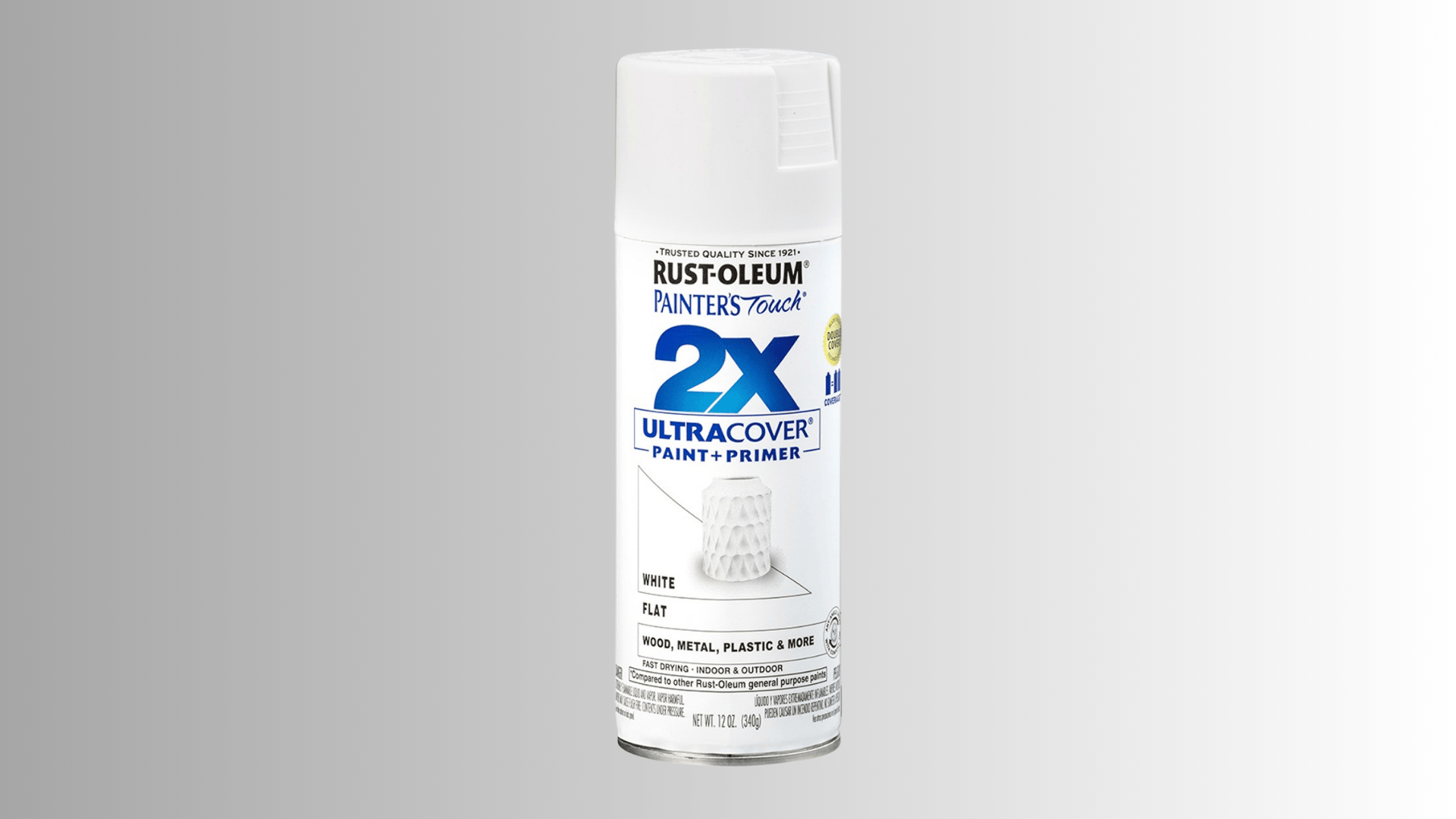
A fast, no-fuss option for garden signs, décor, or small fixes. It sprays on smoothly, dries quickly, and handles moisture well. Best used away from veggie beds since it has higher VOCs, great for accents, not ideal for areas near food.
- Price Range: $6–$12
- Key Features: Fast-drying spray, good adhesion, resists moisture
4. General Finishes Milk Paint
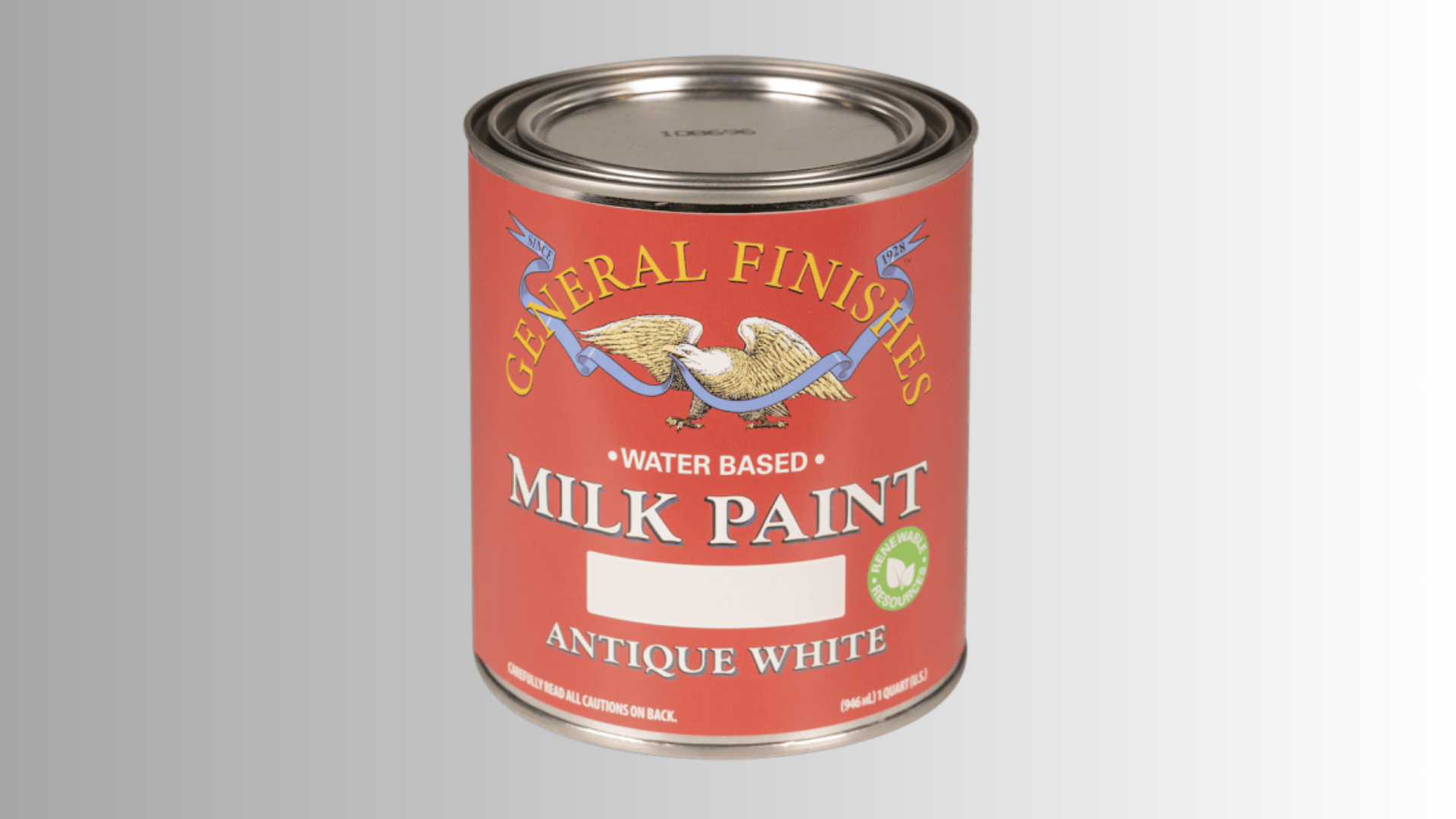
Good pick for small projects like planters, benches, or trim. Goes on easily, gives a smooth, soft finish, and needs little prep. Low VOCs make it a safer bet near plants and garden beds. Ideal when you want simple updates without harsh chemicals.
- Price Range: $35–$45
- Key Features: Smooth finish, low prep, works indoors and out
5. Sherwin-Williams Emerald Exterior Paint
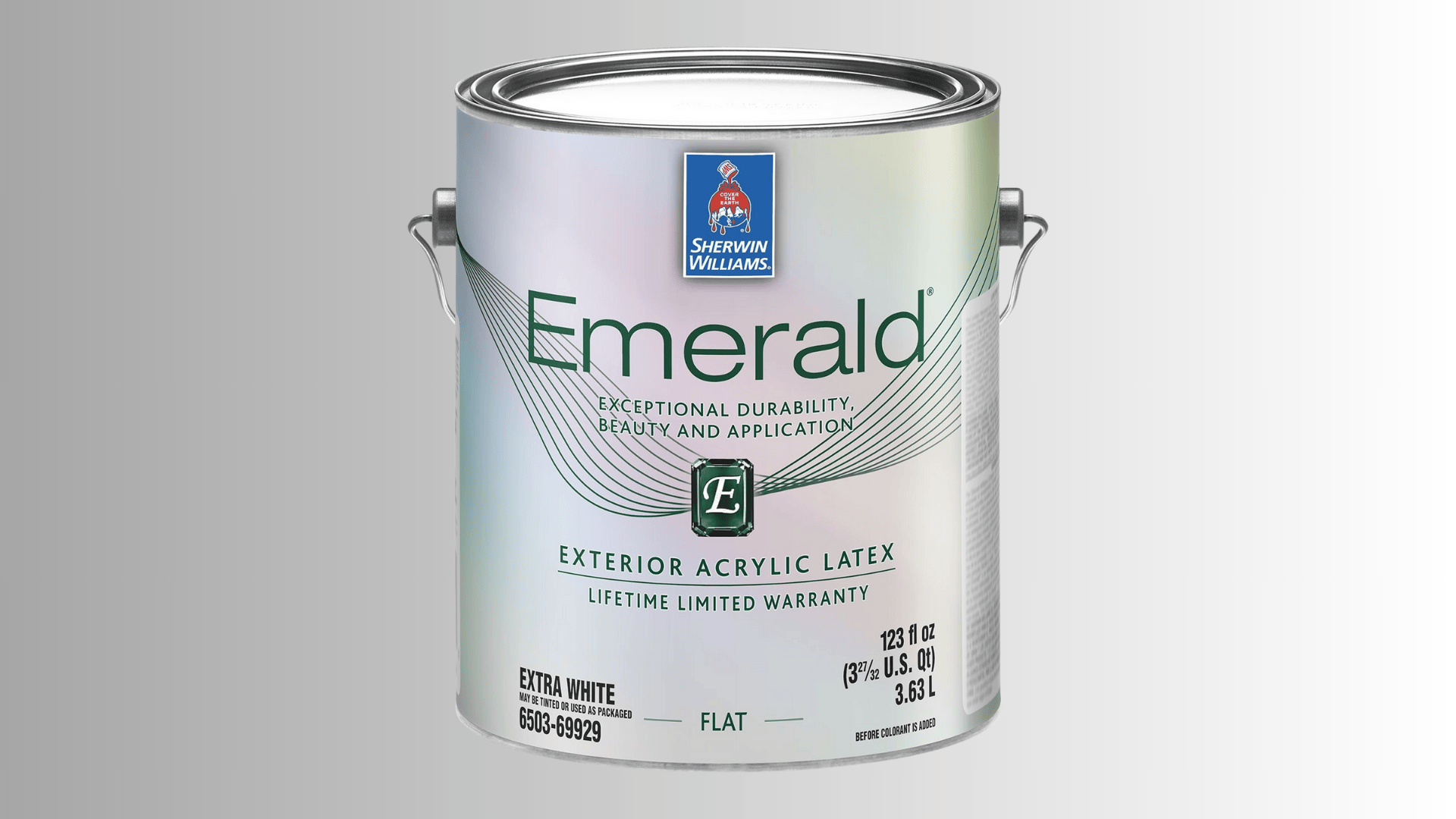
Best for long-haul jobs in rough weather. This self-priming paint covers well, holds up against moisture and UV rays, and sticks strongly over time. Great for siding, doors, or trim, especially in garden spots that get hit with sun, rain, and hose water.
- Price Range: $80–$95
- Key Features: Weather-resistant, great coverage, self-priming
Each of these paints has its strengths. Match your choice to the project, climate, and budget for outdoor results that last
Types of Paint for Outdoor Wood
Knowing the differences between outdoor paint types saves time and helps you get the right finish the first time. Here’s a quick breakdown to guide your choice:
| Paint Type | Best For | Pros | Cons |
|---|---|---|---|
| Acrylic | Siding, trim, exposed surfaces | UV-resistant, flexible, resists cracking and peeling | Can cost more than latex |
| Latex | Fences, garden boxes, and outdoor furniture | Fast-drying, easy cleanup, and eco-friendlier | May not penetrate wood grain as deeply as oil-based |
| Oil-Based | High-traffic areas, porch rails | Deep wood penetration, durable finish | Longer dry time, needs solvents for cleanup |
| Specialty Paints | Decorative pieces, unique surfaces | Custom look, available in low-sheen or rustic finishes | Must be rated for exterior use, or it won’t hold up |
Choose the paint that fits your surface, exposure level, and how much maintenance you’re willing to do.
What to Look for in a High-Quality Exterior Paint
Not all exterior paints are built the same. If you want protection that lasts through rain, heat, and sun, it helps to understand the key features that make a difference outdoors. Here’s what to look for before you buy:
1. UV Resistance
Sunlight can do serious damage over time. Without UV protection, colors fade quickly, and the paint can start to chalk, crack, or peel.
UV-resistant paints are specially formulated to hold up against direct sun exposure, keeping your home’s color rich and vibrant for years. This feature is especially important in sunny climates or high-altitude areas where the sun hits harder and longer each day.
2. Waterproofing
Rain, snow, humidity, and dew can all seep into exposed wood and other porous surfaces. A high-quality exterior paint should act as a waterproof barrier that keeps moisture out and prevents rot, mildew, and peeling.
Look for products that are labeled moisture-resistant, water-repellent, or mildew-resistant. These options create a strong seal while still allowing the surface to breathe, reducing the risk of trapped moisture.
3. Low VOCs & Eco Safety
Volatile Organic Compounds (VOCs) are chemicals that evaporate as paint dries, contributing to air pollution and health issues like headaches or respiratory irritation.
Many exterior paints now come in low-VOC or zero-VOC formulas that perform just as well as traditional paints but are better for your health and the environment.
If you’re painting near a garden, pets, or a kids’ play area, eco-friendly paints are a smart choice.
4. Finish Type (Matte vs. Semi-Gloss)
The finish you choose affects more than just the look of the paint; it also determines how easy it is to clean and how well it hides flaws.
- Flat or matte finishes are best for hiding imperfections on old wood or rough siding. They give a soft, chalky look but aren’t easy to clean, so they’re best for low-traffic areas.
- Satin or eggshell finishes offer a slight sheen and are more durable than flat paint. They’re easy to wipe down and work well on siding, fences, and trim.
- Semi-gloss or glossfinishes have a shiny, polished look that holds up well in high-traffic or high-moisture areas like doors, railings, and window trim. Just remember, they highlight surface flaws, so surface prep matters.
5. Dry Time & Recoat Window
Paint that dries quickly helps you avoid weather mishaps and finish the job faster, but fast-drying isn’t always better if it means poor coverage. Check the label for both dry-to-touch time and recoat time.
Some paints require only a few hours between coats, while others need overnight drying. Following the recommended timing ensures proper adhesion and a longer-lasting finish.
6. Warranty or Product Guarantee
Good exterior paints often come with a warranty, sometimes up to 15 years or more. These warranties usually cover common issues like peeling, blistering, fading, and cracking.
Always read the fine print: Some warranties require specific prep steps (like priming or cleaning) to remain valid. A solid warranty is a strong signal that the manufacturer stands behind their product’s performance.
Choosing the Right Exterior Paint for Your Project
Outdoor wood takes a beating, especially in the garden. Between sun, rain, hose spray, and soil splash, your paint needs to pull its weight.
Pick the right kind, and you’ll get longer-lasting protection with less rework down the road.
Furniture (Chairs, Benches, Tables)

Garden furniture often lives in sunny, damp spots. Paint needs to breathe and stay cool to the touch.
Use breathable paints that won’t trap moisture inside the wood. A non-tacky finish is key, especially if the furniture sits in full sun or gets brushed by wet leaves.
UV-resistant formulas help keep the color from fading, while mildew protection adds extra durability near shaded beds or mulched areas.
Decking and Flooring
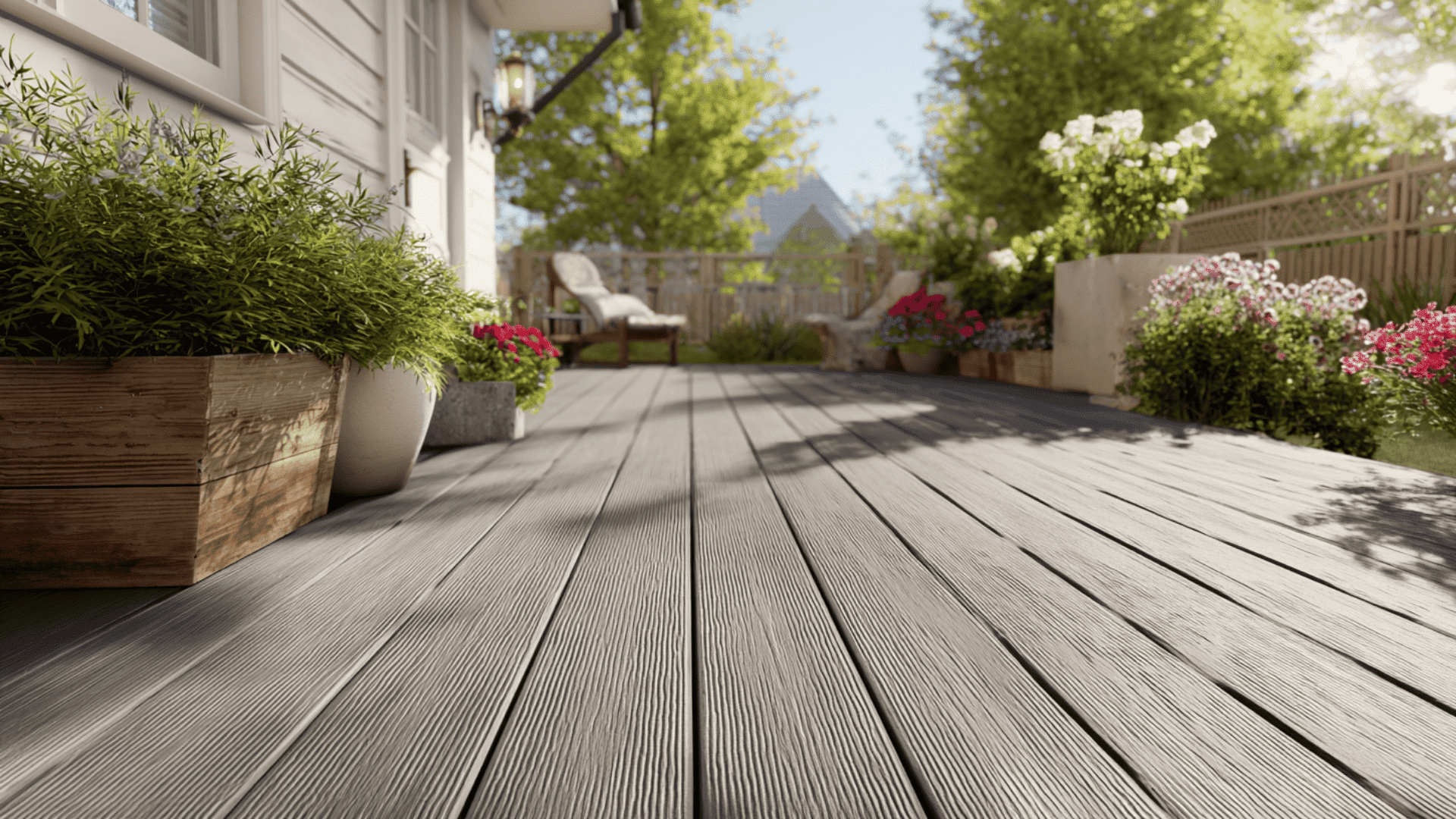
Garden decks get a lot of wear; watering, foot traffic, dropped tools, and muddy boots.
Pick paint built for high-traffic areas with strong adhesion. If your deck surrounds planting beds or containers, moisture resistance matters too.
For added safety, especially in wet zones, choose a product with anti-slip additives or mix in a grit specifically made for exterior paints.
Fencing, Siding, and Barns
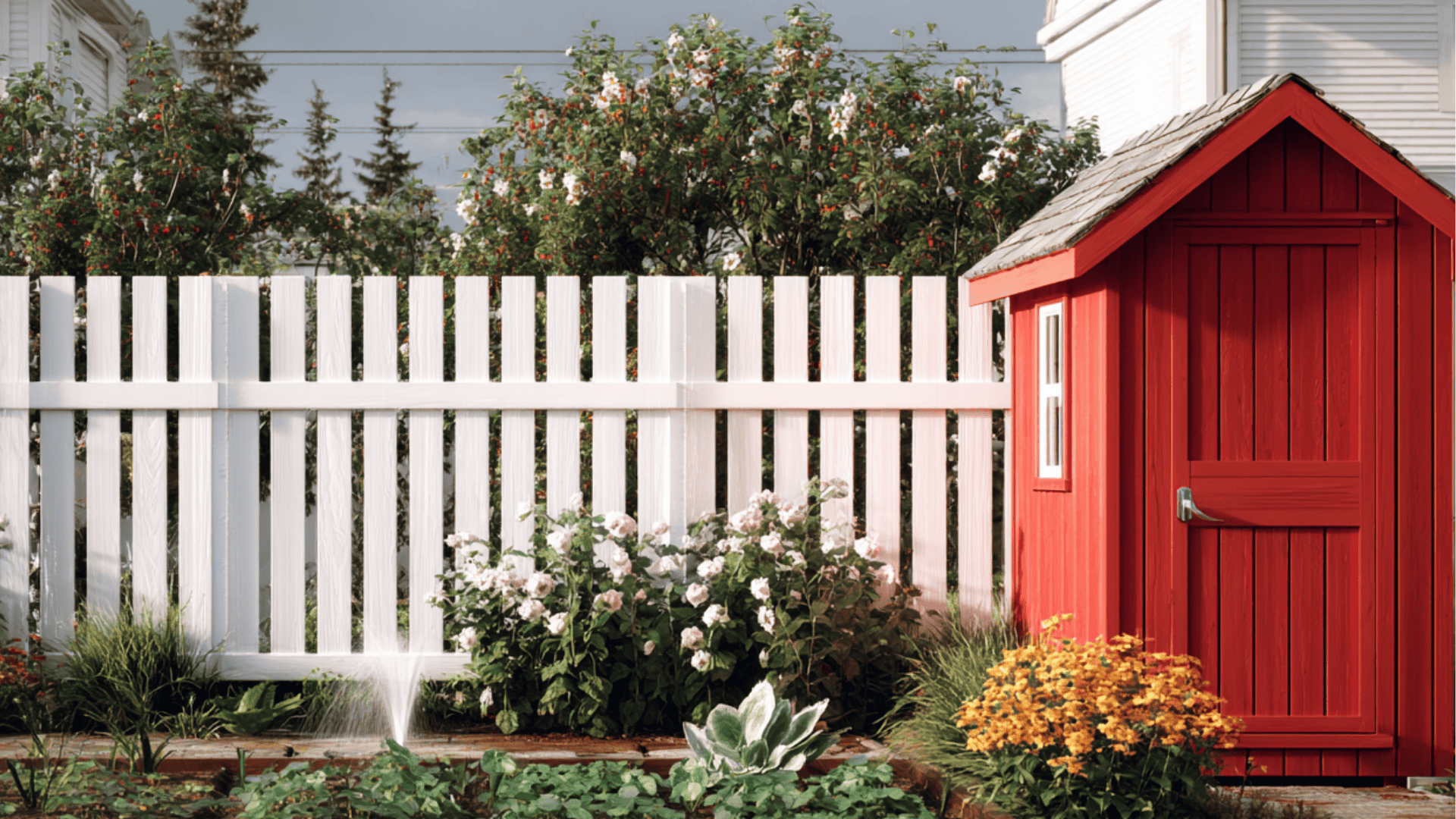
Wood fences and sheds often stand right next to plants, compost, or irrigation spray. Use paint with solid water repellency and long-term coverage.
A good fence paint should resist peeling even when exposed to constant sun on one side and shaded dampness on the other. If your fence borders edible gardens, stick with low-VOC options.
Outdoor Wooden Signs and Decor

Garden signs, labels, and decorative panels deal with a mix of sun, soil, and spray. Look for waterproof, colorfast paints that can handle full exposure without cracking or bleeding.
For pieces placed near veggies or herbs, use low-toxicity, low-VOC paints that won’t leach into the ground. Fast-drying options help reduce dirt sticking while the paint cures.
Climate-Specific Paint Advice
Different weather conditions call for different paint types. Use this breakdown to find the best paint features for your region:
| Climate | Paint Features to Look For | Finish Tips | Extra Notes |
|---|---|---|---|
| Hot & Sunny | UV-resistant formulas, light-colored paints, flexible acrylics | Matte or satin to reduce glare | Reapply every few years to maintain color and protection |
| Cold & Snowy | Freeze-thaw resistant paint, oil-based or hybrid options, strong adhesion | Semi-gloss or satin to help snow slide off | Only paint in temperatures above 50°F for proper curing |
| Wet & Humid | Breathable latex or acrylic paint, mold/mildew resistance, fast-drying formulas | Satin or eggshell to resist moisture buildup | Don’t paint just before rain; ensure full drying time |
| Coastal & Salty | Marine-grade or enamel paints, high weatherproofing, corrosion-resistant types | Gloss or satin for easier cleaning | Rinse surfaces occasionally to remove salt and prevent buildup |
Pick paint that suits your climate. It’ll hold up better, protect your wood longer, and save you headaches down the line.
Wrapping Up
Now you’ve got a solid grip on how to choose the best paint for outdoor wood. Think about your climate, the surface you’re covering, and how much wear and tear it’s going to see.
The right paint means less peeling, cracking, and repainting down the road.
Focus on UV protection, water resistance, and the right finish. Those are the details that really make a difference.
Want more practical, no-fluff advice? Check out my other home improvement guides and make every coat count.


